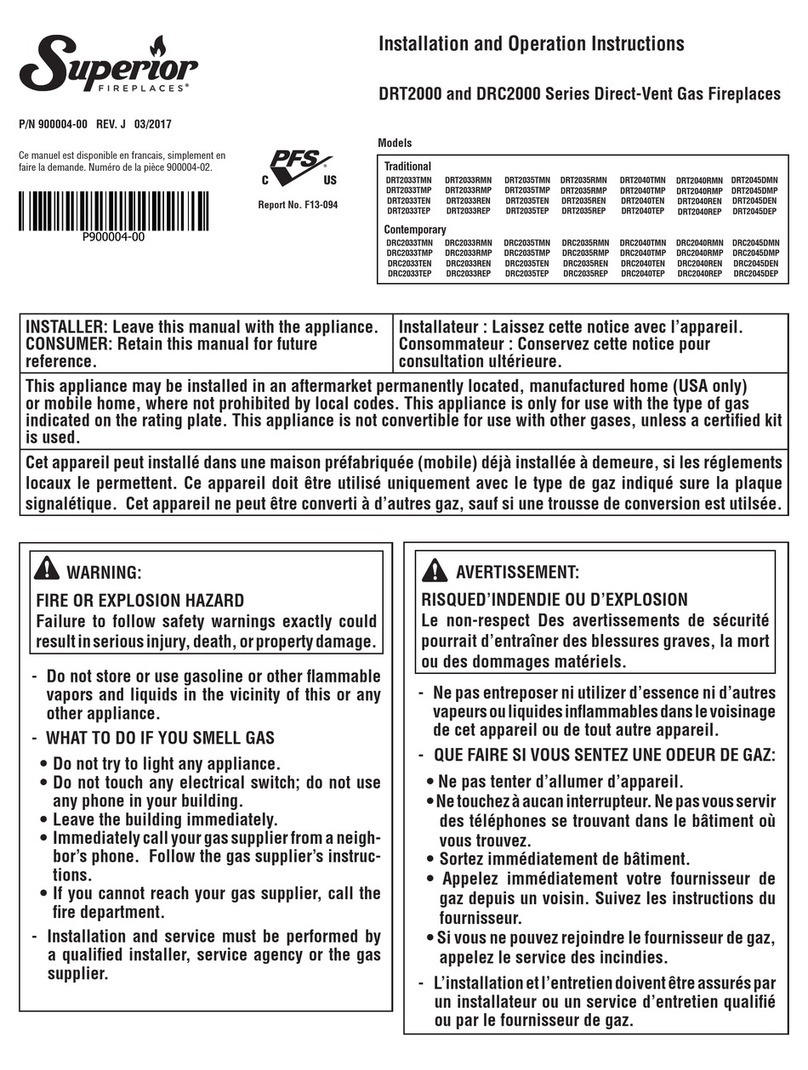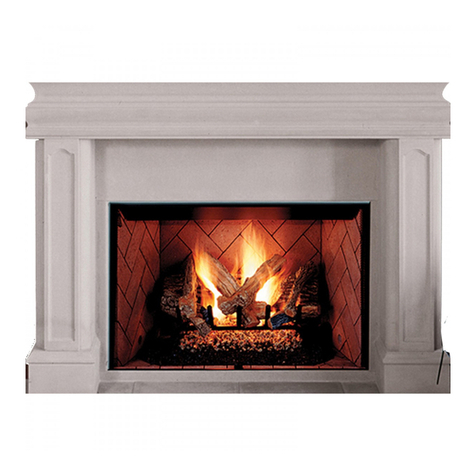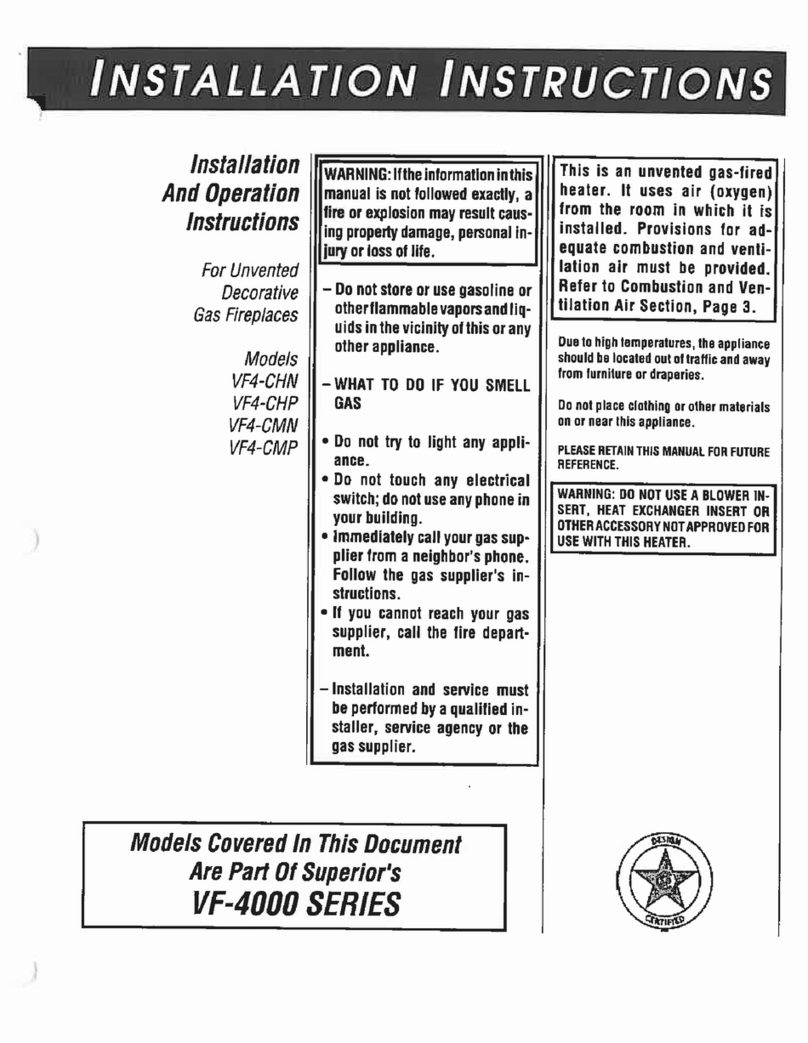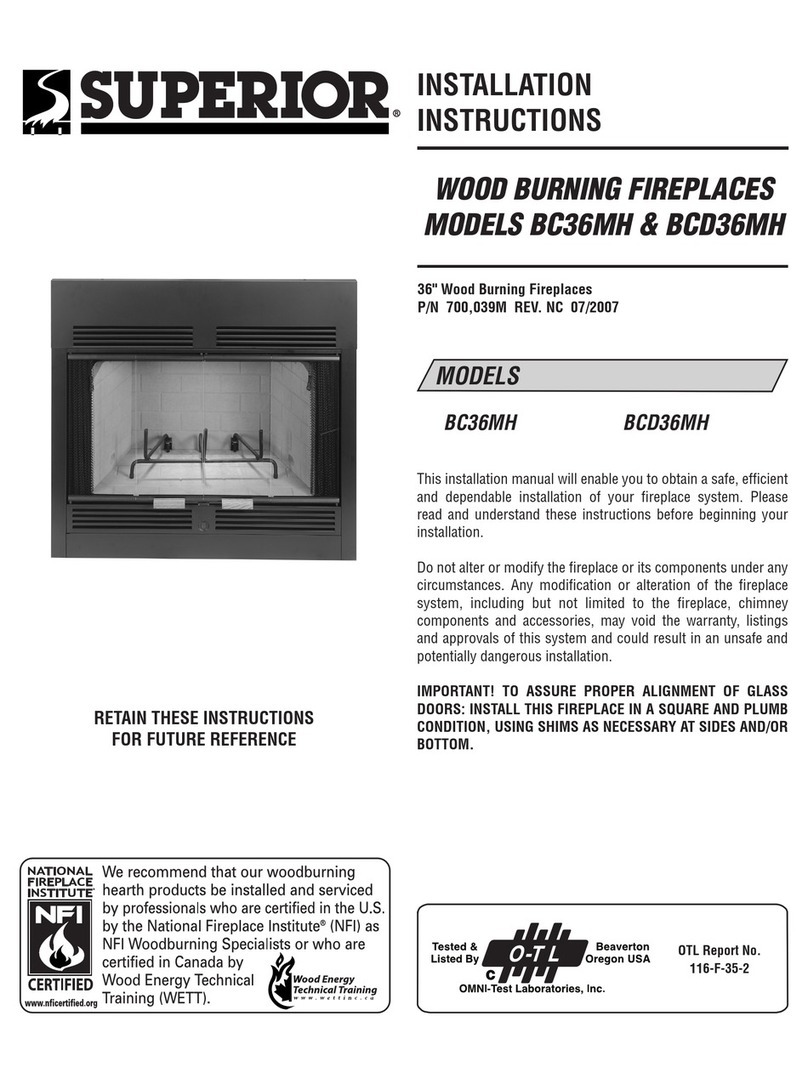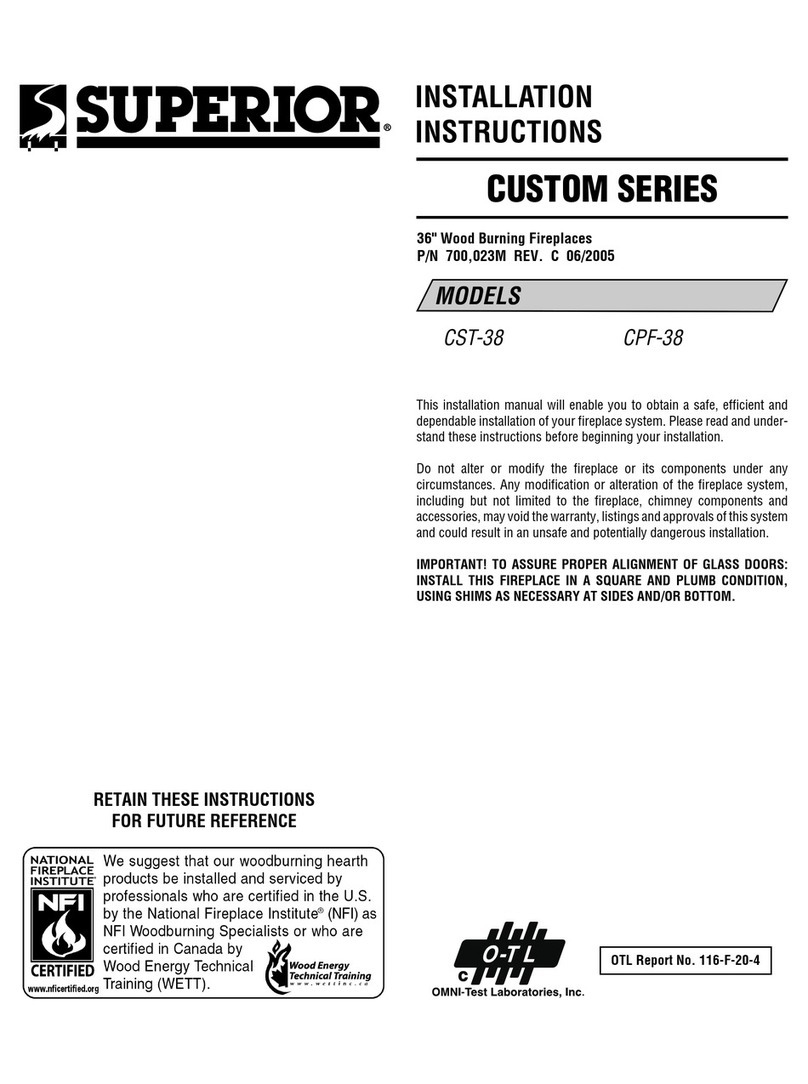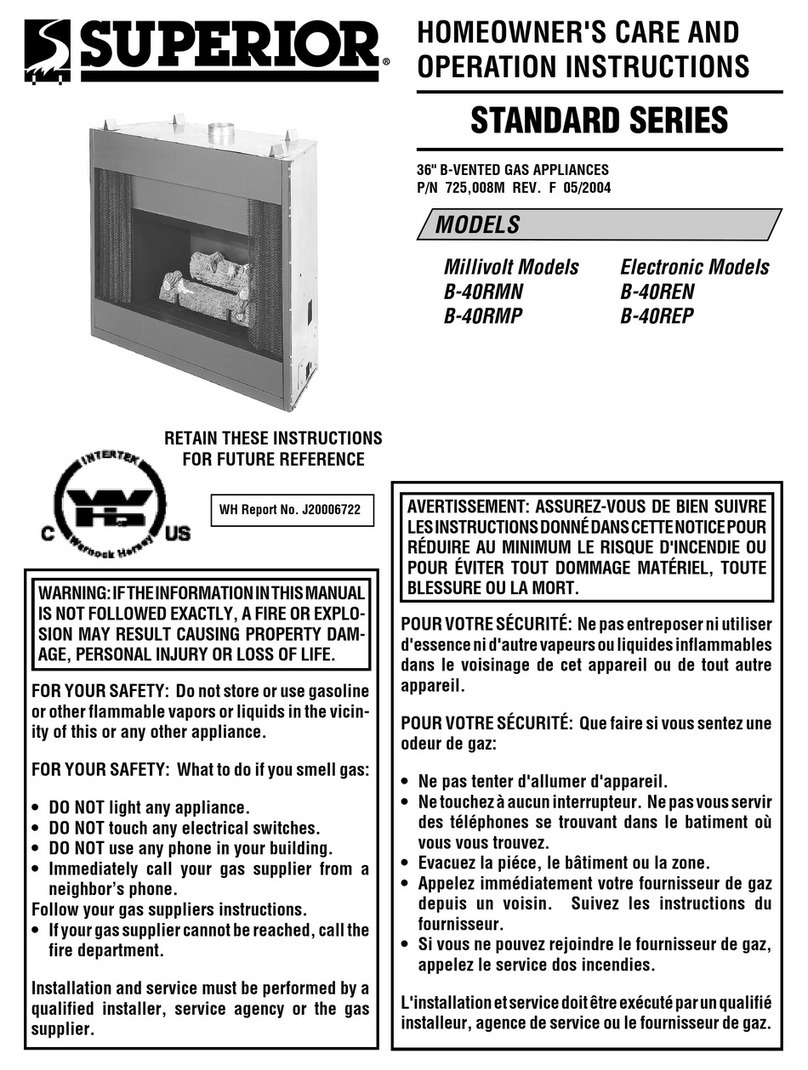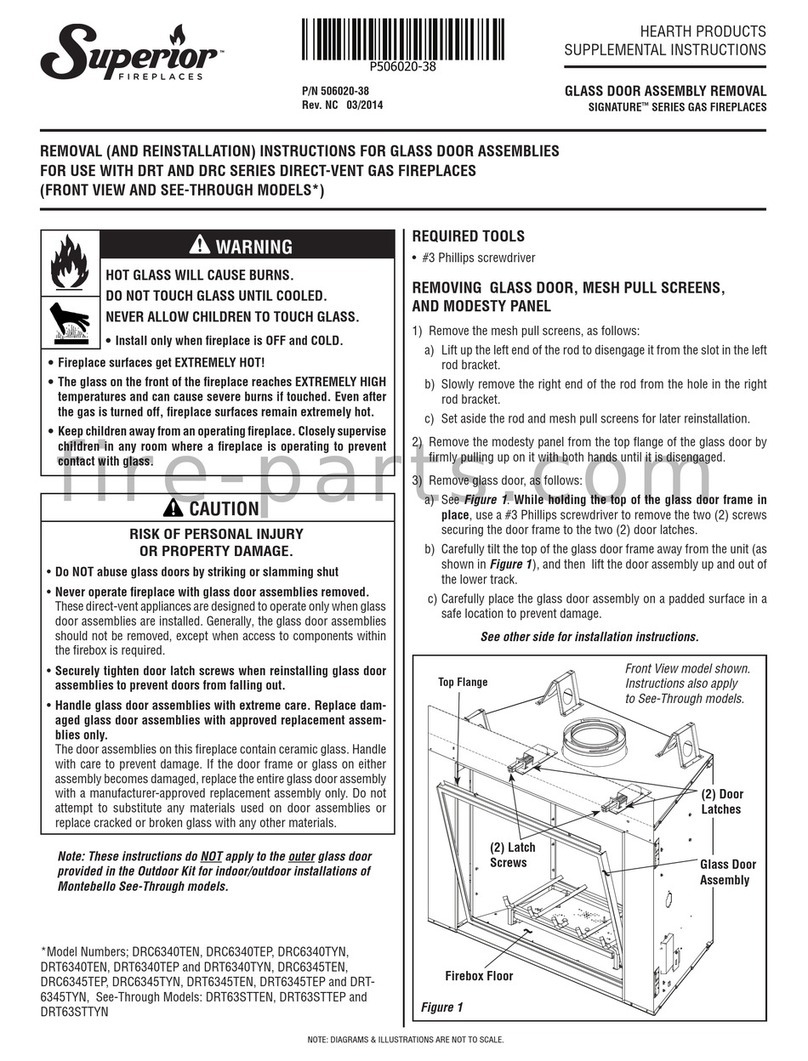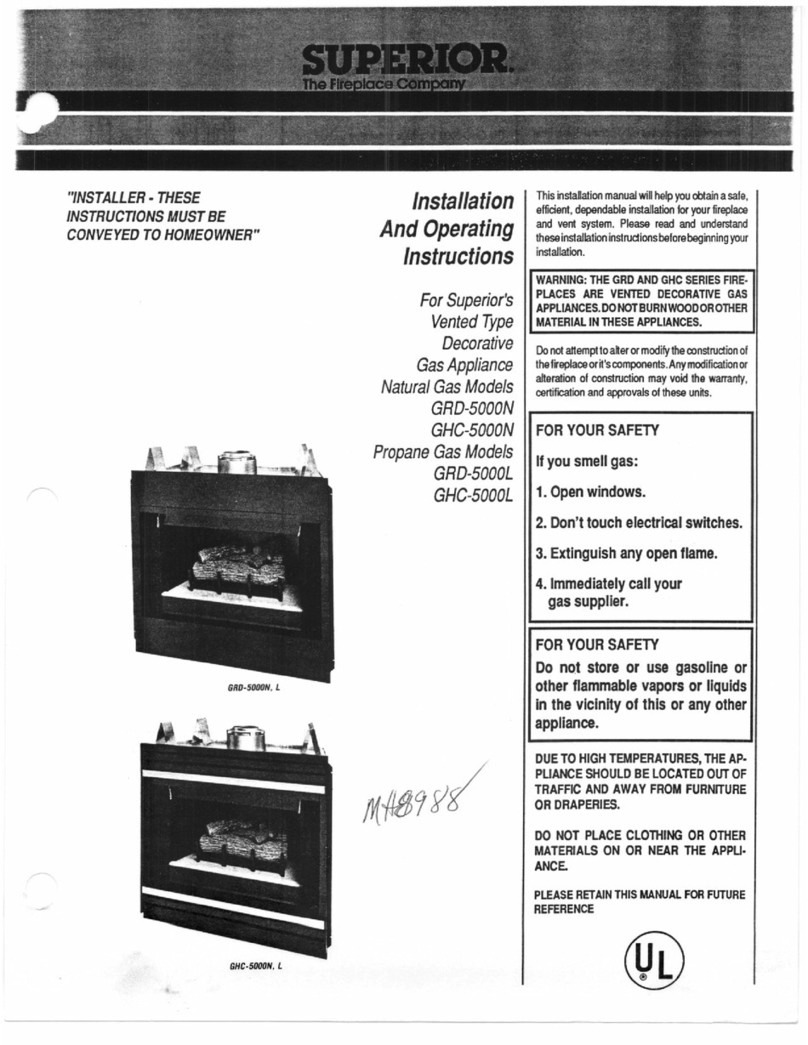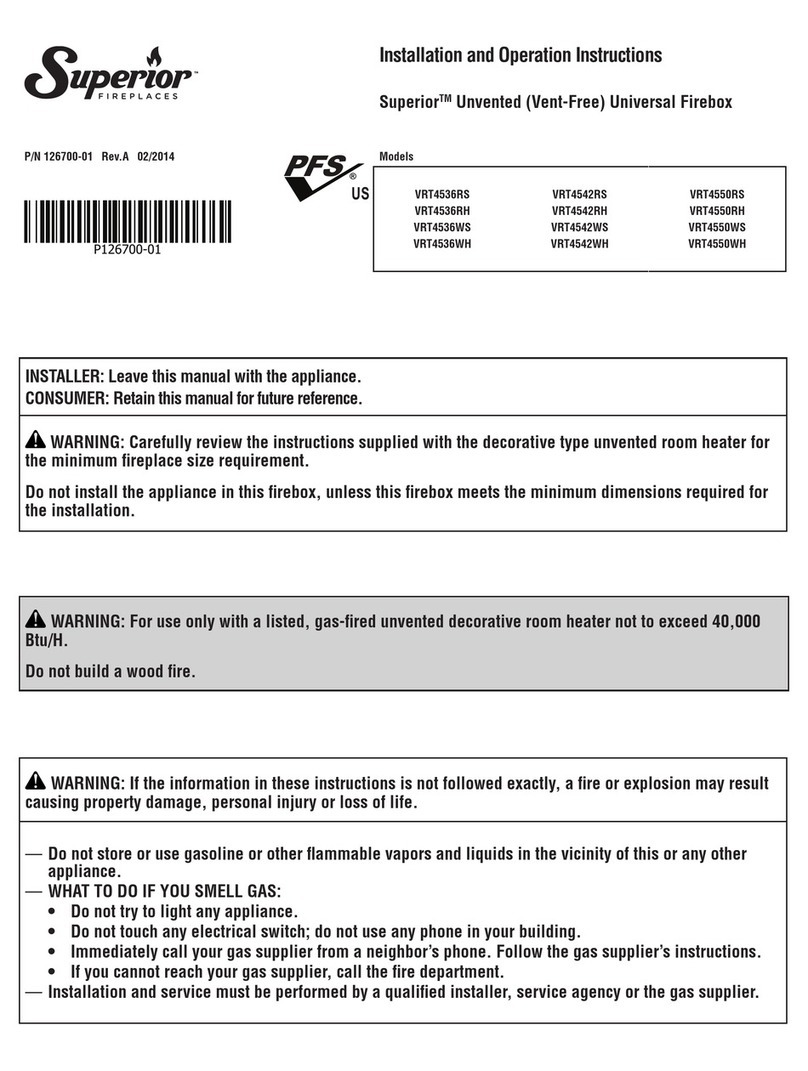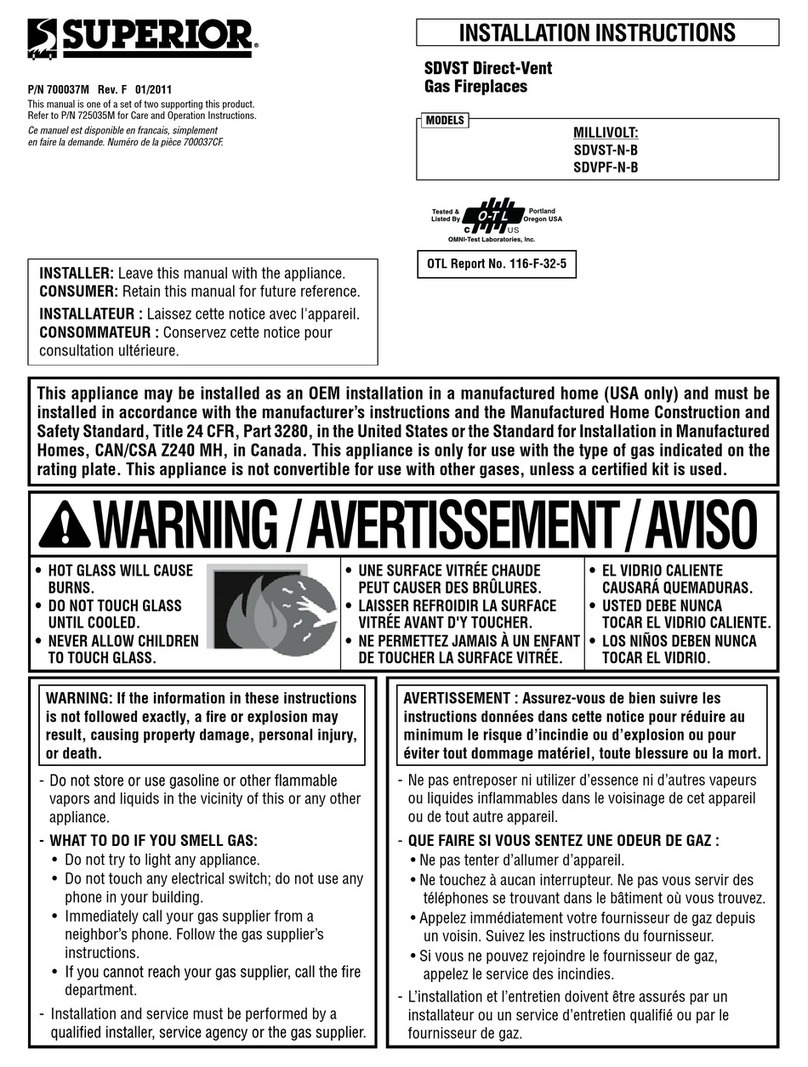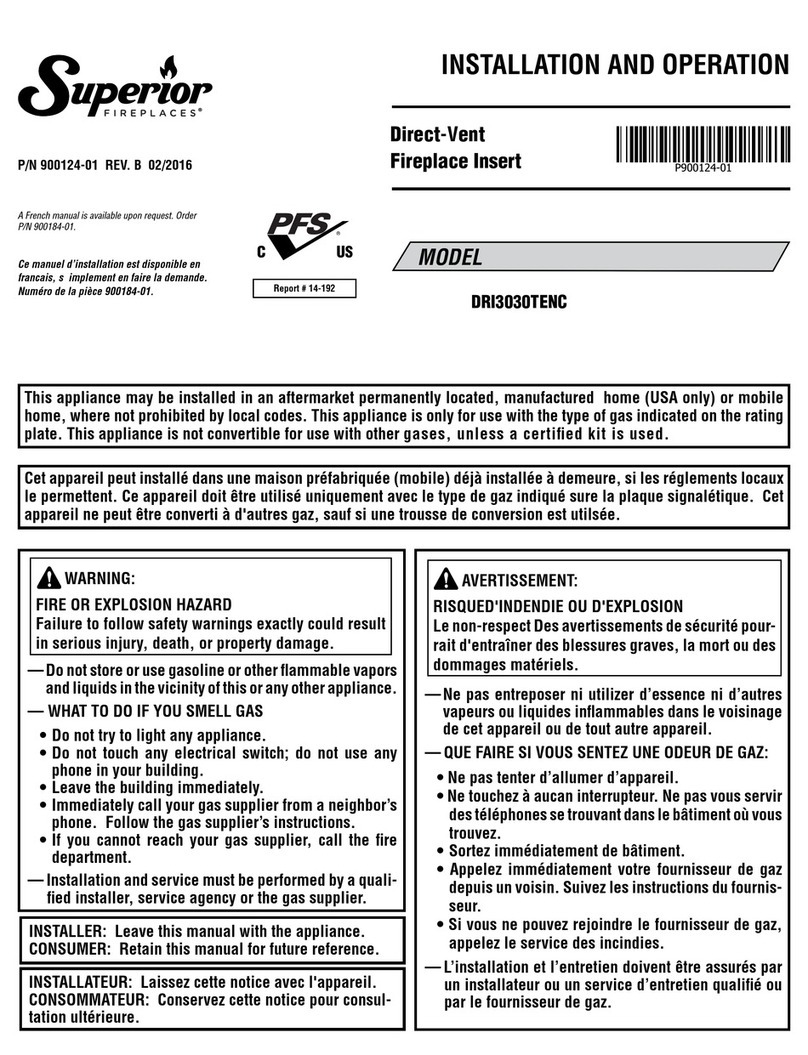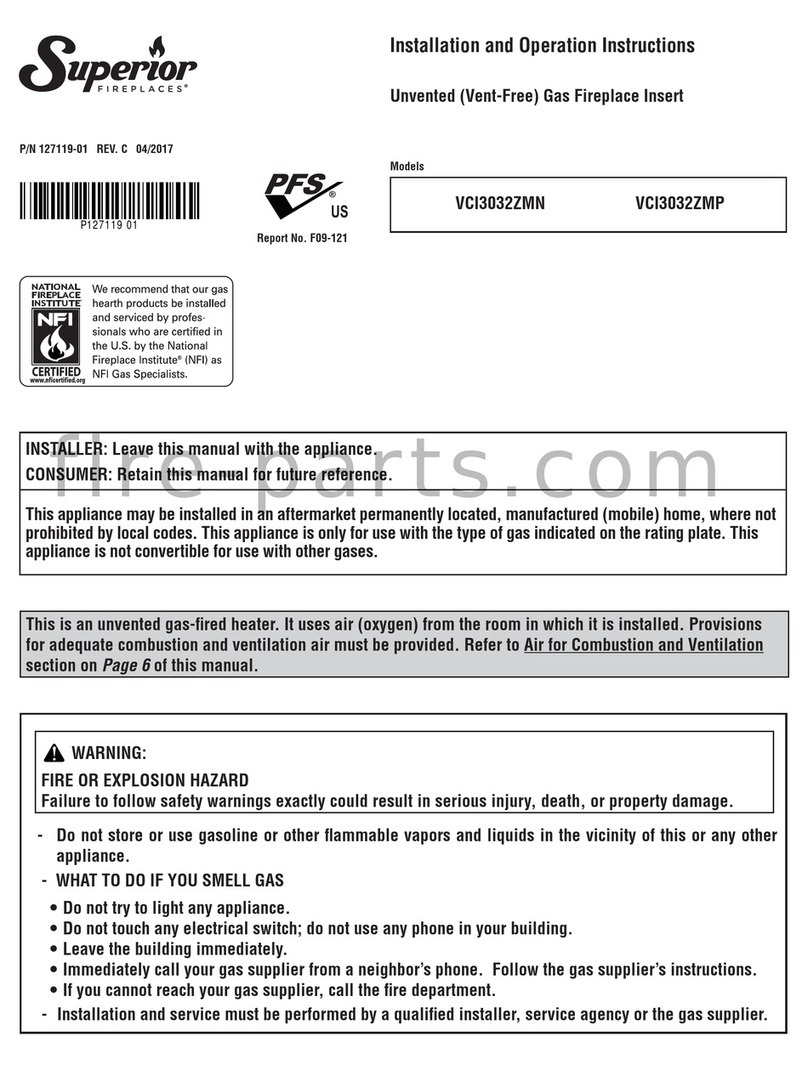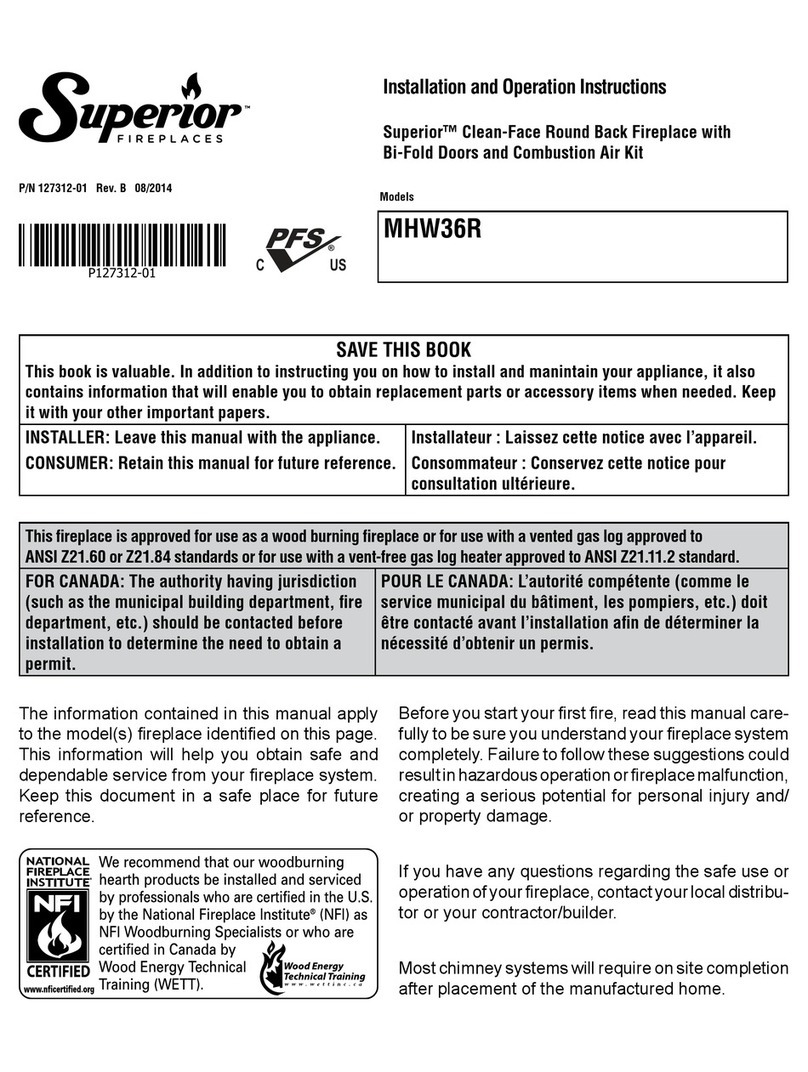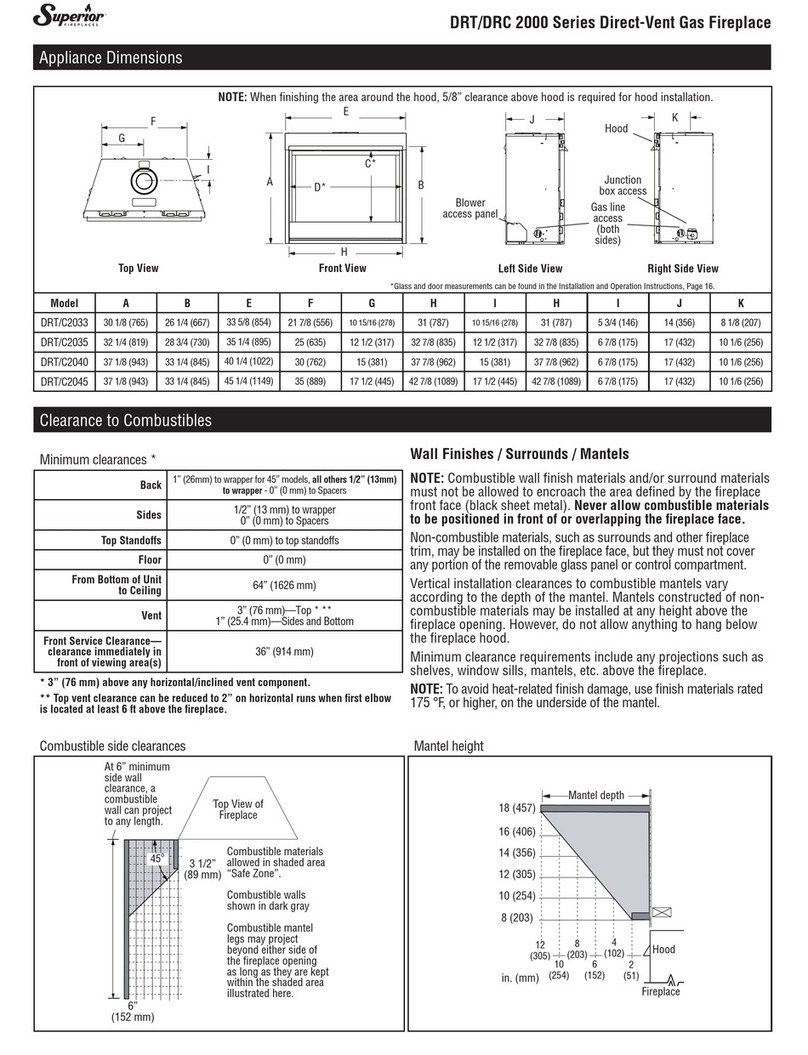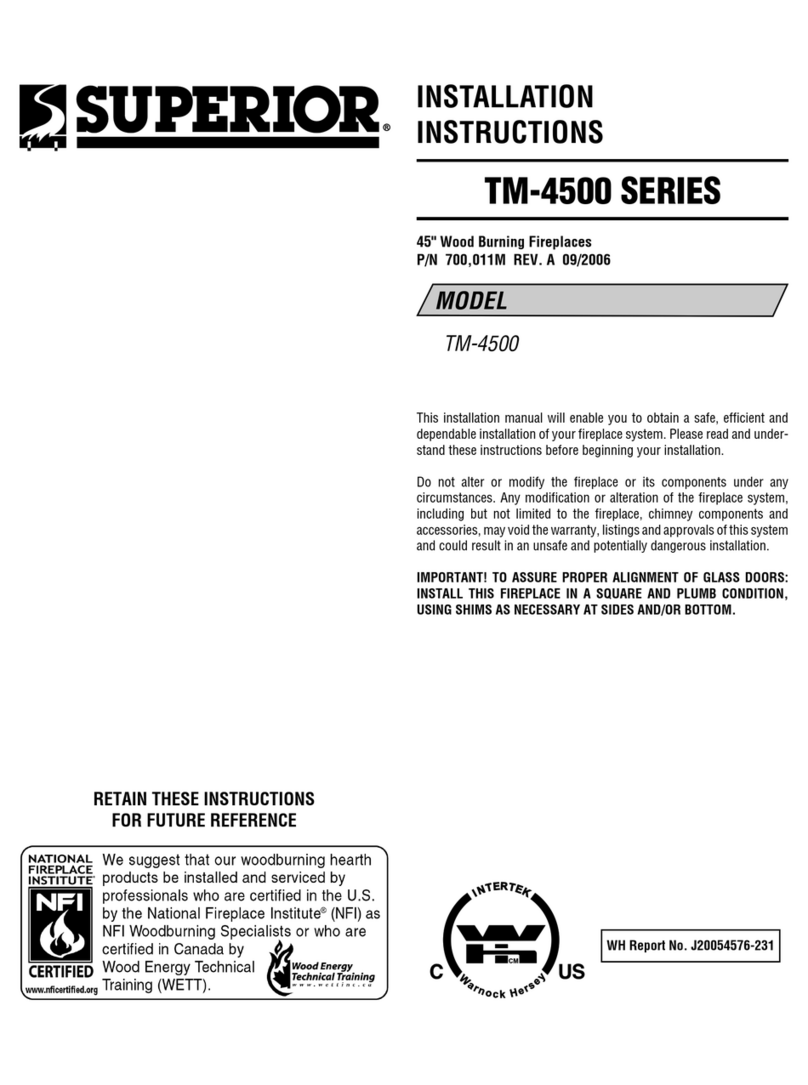
NOTE: DIAGRAMS & ILLUSTRATIONS ARE NOT TO SCALE.
4
If the horizontal distance from the peak of the
roof is less then 10', thetop of the chimney must
be at least 2' above the peak of the roof.
If the horizontal distance from the chimney
edge to the peak of the roof is more than 10' a
chimney height reference point is established
on the roof surface 10' horizontally from the
chimney edge. The top of the chimney must
be at least 2' above this reference point. In all
cases, the chimney cannot be less then 3' above
the roof at the edge of the chimney.
The 2' in 10' rule is necessary in the interest
of safety but does not ensure smoke-free op-
eration. Trees, buildings, adjoining roof lines,
adverse wind conditions, etc., may require a
taller chimney should the fireplace not draft
properly (Figure 15).
FTF8 CHIMNEY COMPONENT
CALCULATIONS
The minimum installed height of the completed
fireplace system is 10' 6". The maximum height
is 40' 0" when the chimney is exposed.
To determine the number of chimney sections
and chimney components required, follow
these steps:
1. Determine total vertical height of thefireplace
installation. This dimension is the distance from
the surface the fireplace sets on to the point
where smoke exits from the termination.
2. Determine the number of chimney com-
ponents required, except chimney sections.
This would include thimbles, extensions, roof
flashing, etc.
3. The effective heights of the components
are:
The Fireplace = 37”
FTF8-12 = 10-1/4”
FTF8-18 = 16-1/4”
FTF8-24 = 22-1/4”
FTF8-36 = 34-1/4”
FTF8-48 = 46-1/4”
FTF8-CTD Termination = 6”
4. Determine amounof chimneyheight required
by subtracting total combined height of all pre-
selected components (fireplace and chimney
components from total desired height).
Reference Vertical Elevation Chart and deter-
mine the number of chimney sections (quantity
and length) required.
To clear any overhead obstructions, you may
offset your chimney systemusing Security's 30°
offset and return elbows. Use two elbows - an
offset elbow to initiate the offset and a return
elbow to terminateit. A 30° offset elbow, angling
in any direction,may be thefirst component used
off the top of the fireplace flue collar.
The offset and return elbows may be attached
together, or a section or sections of chimney
may be used between, but do not exceed 20' in
total length between elbows. If sections of pipe
exceed 10' between elbows,a chimney stabilizer
must be used at the midpoint (see Figure 17).
The stabilizer support straps must be attached
under tension (in shear) to structural framing
members above. When two sets of elbows
are used, the maximum combined length of
chimney used between elbows cannot exceed
20' (see Figure 18). Example: If C1= 10' then
C2cannot exceed 10'.
If an offset exceeds 6' in length, each chimney
joint beyond the first 6' of offset to the return
elbow, must be secured by a No. 8 x 1/2" sheet
metal screw located at the underside of the joint
(see Figure 20).
A 1/8" diameter hole must be drilled in the
chimney joint using a 1/8” diameter drill. Hole
should be drilled in center of joint overlap (see
Figure20). Be sureto drill only through theouter
chimney casting. Do not puncture the inner flue.
Maximum offset of chimney system is 30°.
Two offsets must not be assembled to form
a 60° offset. However, two sets of offset and
return elbows may be used on a single flue
system, provided the total height of the system
exceeds 25'.
Return elbow support straps must be securely
attached under tension (in shear) to structural
framing members above. Do not substitute a
FTF8-30 offset elbow in place of a FTF8-E30
return elbow.
OFFSET CALCULATIONS
Step 1. Use Offset Chart to determine amount of
horizontal offset (A) and height (B) for various
chimney section assemblies.
Step 2. Use “Height of Chimney Only” column
in The Vertical Elevation Chart to determine
combinations of chimney used above return
elbow to achieve desired heights. Reference
Components Effective Height Chart in vertical
elevation chart section.
Step 3. Use Elevation Chart as job estimator
only. Add necessary firestop spacers and sta-
bilizers as required. Firestop spacers must be
used as shown in Figure 16 and stabilizers as
shown in Figure 9.
Stabilizer
A
1
20'
Max.
B
1
10' Max.
Offset
Elbow
Return
Elbow
C
2
C
1
Figure 17
Figure 16
F8FS30
Firestop Spacer
FTF8-S4 Stabilizer
30°Firestop
And Room Above
10'
Max.
Room Above
1" Min.
Air Space
1" Min.
Air Space
SPECIAL OFFSET INSTRUCTIONS
Chimney 30° Offset through Floor or Ceiling
It may be necessary to assemble the chimney
at 30° when passing through the floor or ceil-
ing area. Use the F8FS30-2 firestop spacer as
shown in Figure 16. Support the chimney at
floor or ceiling penetration with a FTF8 stabilizer
if distance of chimney below ceiling is 10' or
more. Maintain 1" minimum air space to com-
bustibles from chimney sections. The chimney
must pass vertically through the attic space.
